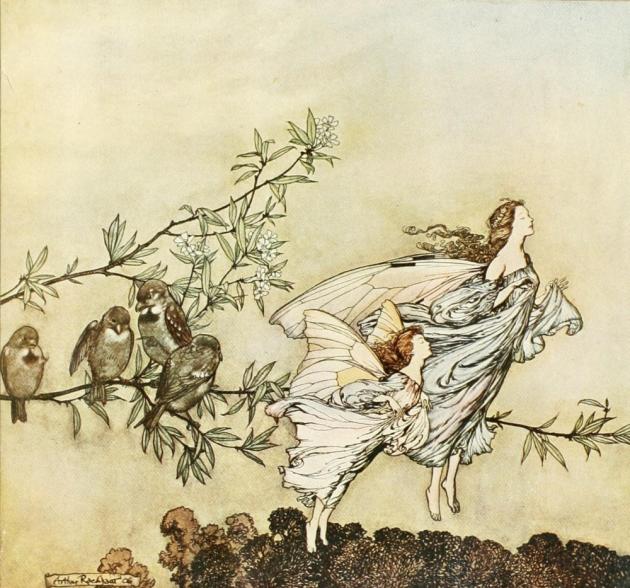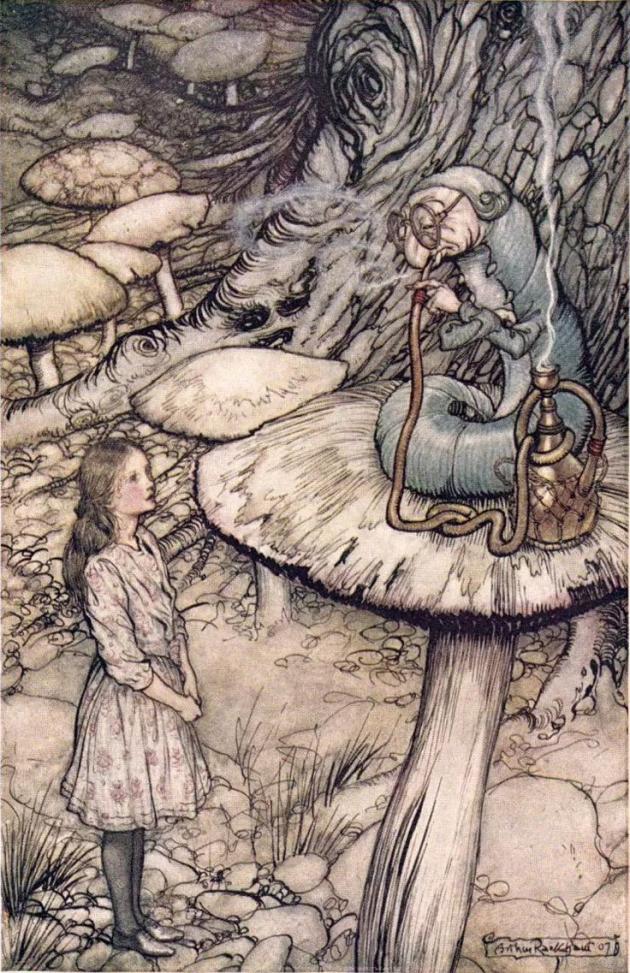Illustrator of the fairy tales
When they wanted to erect a monument to Hans Christian Andersen, where the storyteller was supposed to be surrounded by children, he opposed and said that he wasn’t writing for children.
Meanwhile only few have done as much for children as Andersen, because he called and calls all the inhabitants of the planet to grow up. His tales awaken the human soul.
English literature gave the world a fairy tale both as an author’s genre and as plot inclusions (even Shakespeare has them).
Celtic legends on the Magic Land combined with the Christian understanding of life – and first folklore appeared, and then literature, where life itself acted as a fairy tale, and it was so Christian.
The wonderful world of God could be expressed by a fairy tale talking about miracle and surprise: from nonsense and «Songs of Mother Goose» to «A Midsummer Night’s Dream», «Christmas Song» and «Chronicles of Narnia».
The tale explained what no realistic novel could see, namely, the unheard-of wonder of the world.
But a fairy tale for a child (and for an adult as well) requires to define the narrative, to find in the mind the images of what is being discussed. This work is done by every listener and reader in their own heads, but there is still such good work – to be an illustrator of fairy tales. And in this work, of course, there are amateurs, masters, artisans, and there are geniuses. One of such rare geniuses of such a rare work was the English illustrator Arthur Rackham.
He was born on September 19, 1867 in London, and died on September 6, 1939, thus catching the whole of the Victorian era.
They say that the 20th century began in 1914. Natalia Trauberg added that in England it began in 1939. It turns out that Rackham did not live in the 20th century, although such a modern famous illustrator as Charles Vess (who drew pictures for «Stardust» by Neil Gaiman) calls him his teacher.
And it is not surprising, because Rackham influenced the very concept of drawing for a fairy tale, and many in the world still readily use his heritage.
He illustrated almost all of the classic children’s literature in English («The Wind in the Willows», «Alice in Wonderland», «Peter Pan»), as well as Shakespeare’s «A Midsummer Night’s Dream». He also took up on the medieval epic «Song of the Nibelungs», feeling in the ancient lines much of the tonality of the tale.
Walt Disney’s early cartoons used his style. Rackham’s findings have enriched illustrators.
He repeatedly won gold medals at world exhibitions, and in 1914 he even exhibited at the Louvre.
In 1907, publisher William Heinemann commissioned Rackham with illustrations for Lewis Carroll’s «Alice in Wonderland». The artist created 13 color and 16 black-and-white drawings, in which for the first time he abandoned the «Victorian» image of Alice, in favor of a different, new, but equally profound interpretation.
The artist saw that the new time is a challenge for teachers, they need to find new shades of communication with children. One might think that Rackham was looking in his manner for a tonality that touches both children and adults alike. After all, fairy tales were for him a way to tell the Christian truth about the world, without moralizing and didactics, discovering those laws of life, according to which Heaven rewards good people.
In this sense of the genre, Rackham is not alone. Andersen himself wrote that a fairy tale is an adult genre, but children can understand the world with it.
Tolkien would say the same later, noting that not only children, but also adults can see the meaning of a fairy tale most deeply.
His name is associated with the «golden age» of English book graphics.
One might think that the mystery of the faded colors in Arthur Rackham’s drawings is that he depicts the Magic Land at the time of its withering.
We live in a world from which everything leaves: friendship, virtue, fidelity, a bright marriage, the gift of service, poetic subtlety. And Rackham, as it were, says that everything goes away because the fairy tale unnecessary for practical adults and the ability to see the whole world as a miracle began to go first!
Arthur Rackham and his work are a melancholic sadness that the present is leaving the world. It is still there in the Magic Land, but people are not particularly interested in it, although the fairy tale is always there and is always ready to reward those who deserve an award.
It will not be an exaggeration to say that the tale of his drawings is a metaphor that permeates the world and life of the miracles of God.
Culturologist Olga Danchenkova notes: «The Holy Spirit is always in the unusual and non-standard».
Rackham’s drawings are the best confirmation of this.
The illustrator was extremely famous during his lifetime and very much loved. They tried to imitate his manner, they admired him, they learned from him. He wanted to help the upbringing of children, trying with his illustrations to awaken in them a taste for the important and magical.
Rackham said: «In years when a child’s soul is especially open to new impressions and when criteria for life are being formed, he/she needs only the best (and it does not come cheap). Planting or at least choosing art or literature of a lower quality as suitable for children is an irreparable mistake, for which you will have to pay dearly».
And we also find in him such words, full of care for children: «Poetic images, fantastic and comic drawings and books for children play the greatest stimulating and educational role in the years when children’s imagination is most receptive».
In 1939, the artist could no longer get out of bed, but continued his work. Not for the sake of money (he was already famous and rich), but for the general joy. Having completed his last work – illustrations for the fairy tale by Kenneth Grahame «The Wind in the Willows», Rackham died a few weeks after he created the last illustration for this immortal and high book.
Artem Perlik
Опубликовано: Fri, 02/10/2020 - 13:01













